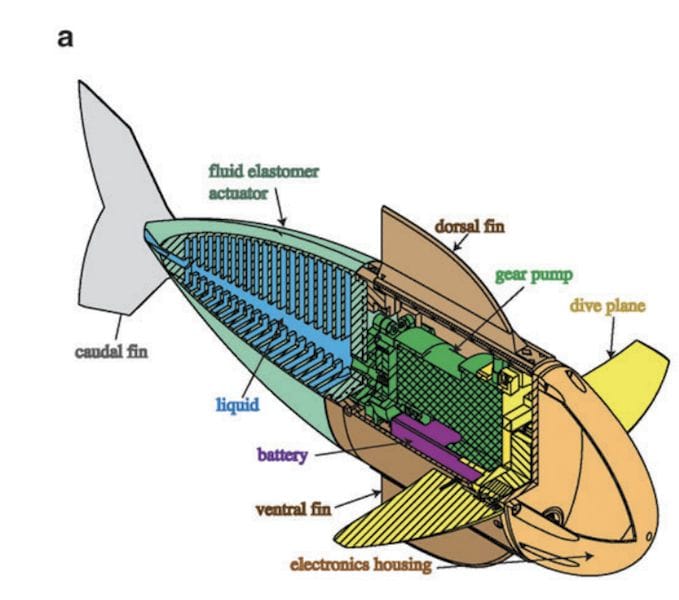
Eindhoven-based 3D print aficionado Joris Peels makes the case for 3D printed soft robots.
Peels, a long-time friend of this publication, occasionally spurts out extremely thoughtful posts on his personal blog VoxelFab dealing with some aspect of technology.
Most recently he’s published a post on the notion of 3D printed soft robots. For a long time Peels was puzzled by all the work done by researchers on what might be considered a frivolous goal. He writes:
Then I had a thought: what if all the Sci-Fi robots were just silly imaginings made by authors looking to entertain? What if we were wasting billions developing humanoid robots that can walk up stairs just because those are in the movies? That would be insane right? Imagine there were billions of dollars in research funding going towards making Quidditch happen? All of this humanoid robot research is just plain silly. If countries were building a Death Star people would ask questions right? If billions were being spent on AT-AT walkers people would wonder, protest? But, whole industries, countries and tens of thousands of researchers are making C3PO happen and we don’t bat an eye? Look, I want real lightsabers as much as the next guy but we need to be rational.
But his revelation occurred at the point where he applied commercialization principles to the idea of 3D printed soft robots:
What if we dispensed with the humanoid robot idea altogether and instead think of functional robots designed for sets of tasks. What if we dropped the one universal Commander Data robot and instead thought of small cheap disposable robots that would live not in a novel but in the real world? Disposable bots, I called them in my mind.
And:
We come up with a robot that would be made in one single production step out of the fewest number of parts or materials in that production step out of inexpensive materials. That one step would approximate the functionality created through many steps and materials in current devices. What would fit that technology path and outperform current technology at lower cost?
And that’s where the 3D printed soft robots come in. Robots that don’t necessarily have electronics or networking, or even power supplies, but sponge off of their working environment to perform their assigned task. They may work through mechanical means, or chemical. Or soak up energy through errant WiFi signals.
They’re small, they’re efficient and accomplish something useful. Peels calls them “Ecobibots”.
And they can be 3D printed.
Their purposes could be anything; if they are inexpensive – and potentially even recyclable, then even casual uses would be feasible. The number of functions one might have such devices performing is limited only by imagination, and if someone develops popular applications, then things could change.
Could this be the business case that truly launches a consumer 3D printing wave that sticks? Could this be an entirely new category of devices enabled by 3D printing and ingenious design?
Peels seems to think so. And I do too.
Read his entire thoughts below.
Via VoxelFab

